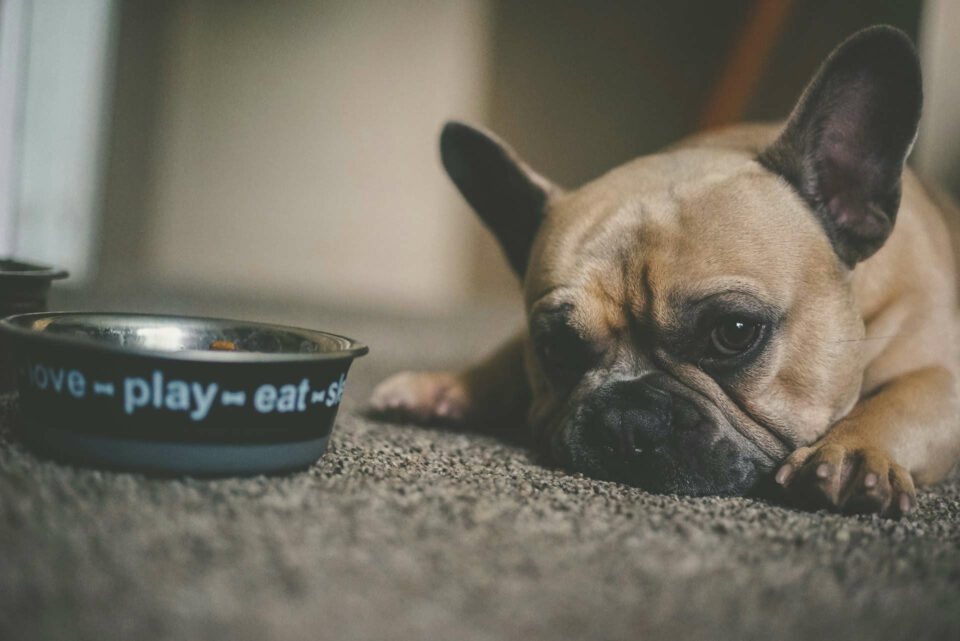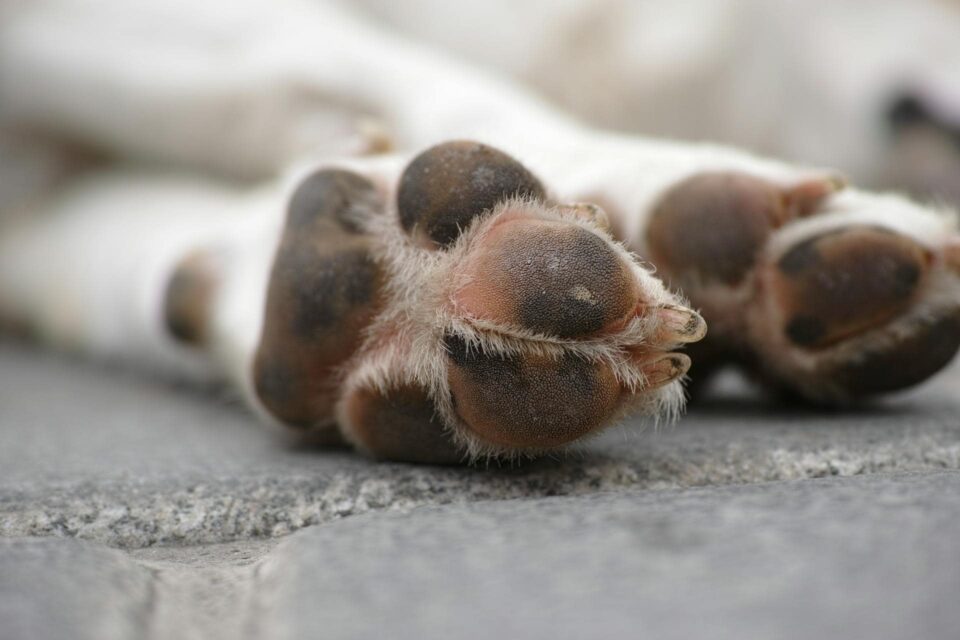Dog Itching Without Fleas: Causes, Solutions, and Relief Strategies
When your dog is scratching incessantly but fleas are nowhere to be found, it can be a perplexing and concerning situation. This article delves into the various causes of canine itchiness beyond fleas, exploring conditions such as atopic dermatitis, food allergies, and environmental allergens. We’ll also discuss a range of natural remedies and relief strategies that can help soothe your dog’s discomfort and improve their skin health. Understanding these factors is crucial for providing your furry friend with the best care and comfort possible.
Key Takeaways
- Canine itchiness can stem from various sources including atopic dermatitis, food allergies, and environmental allergens, even when fleas are not present.
- Incorporating essential fatty acids and vitamin E into your dog’s diet, along with using protective booties, can provide relief and prevent further irritation.
- While home remedies can offer temporary relief, it’s essential to address the underlying condition with veterinary assistance to ensure your pet’s long-term health.
Understanding the Causes of Canine Itchiness Beyond Fleas
Identifying Symptoms of Atopic Dermatitis in Dogs
If you’ve ruled out fleas but your dog is still incessantly scratching, it might be time to consider atopic dermatitis as a potential culprit. This condition, often linked to a genetic predisposition, manifests through a variety of symptoms that can cause significant discomfort for your furry friend. Look for signs such as persistent scratching, licking, or biting at the skin, which can lead to red, inflamed areas or rashes. These symptoms are not only distressing but can also lead to more serious complications if left untreated.
Atopic dermatitis in dogs can also present with chronic ear infections, sneezing, and even digestive issues like vomiting or diarrhea. It’s essential to keep an eye out for hair loss, skin thickening, or any foul odor emanating from your pet, as these can be indicative of secondary infections. In the case of dog-itching-no-fleas, these signs are particularly telling and warrant a visit to the veterinarian for a comprehensive evaluation and treatment plan.
Remember, early detection and management are key to providing relief and improving your dog’s quality of life. Don’t hesitate to seek professional advice if you notice any of the above symptoms, as they can guide you through the diagnosis process, which may include skin scrapings, biopsies, or allergy testing, to pinpoint the exact cause of your dog’s discomfort.
Related: What to Look for in a Dog Shampoo?

The Impact of Food Allergies on Your Dog’s Skin Health
When your beloved dog starts itching incessantly, it’s natural to suspect fleas. However, if these pests are not the culprits, food allergies might be to blame. Identifying and eliminating the specific allergen is key to providing relief. Common culprits in canine diets include beef, dairy, wheat, and chicken. An elimination diet, under veterinary supervision, can help pinpoint the offending food.
Once you’ve identified the allergen, it’s crucial to read labels and select hypoallergenic food options that avoid these triggers. Remember, proper grooming practices and natural remedies can also play a role in alleviating your dog’s discomfort. If your dog’s itching persists despite dietary changes, consult a vet to explore other potential causes and solutions. Being proactive in managing your dog’s allergies can prevent further discomfort and promote overall skin health.
- Identify the allergen through elimination diet or testing
- Choose hypoallergenic food options
- Consult a vet for persistent symptoms
- Incorporate natural remedies and proper grooming to support skin health
Related: How to Relieve Dog Itching after Grooming: Effective Solutions
Addressing Environmental Allergens and Your Pet’s Discomfort
When your furry friend starts to scratch, sneeze, or show signs of skin irritation, it’s time to consider the role of environmental allergens. Creating an allergy-friendly space is essential for their well-being. Start by making your home a sanctuary from allergens with regular cleaning to reduce dust, using an air purifier, and keeping windows closed during high pollen days.
Grooming is also key in battling the itch. Regular baths can help remove allergens from your pet’s fur and skin. Additionally, be mindful of your pet’s diet; food allergies can contribute to skin discomfort, so identifying and avoiding problematic foods is crucial.
Lastly, remember that climate change is affecting our pets too. By adopting environmentally friendly practices, you can contribute to a healthier planet and a more comfortable environment for your pet. Here are a few steps to help you get started:
- Create a Safe Haven: Reduce indoor allergens with cleanliness and air purification.
- Grooming is Key: Bathe and groom your pet regularly to remove allergens.
- Watch the Diet: Identify and eliminate foods that cause allergic reactions in your pet.
Recognizing Secondary Infections as a Source of Itching
When your dog’s incessant scratching goes beyond the usual suspects of fleas or environmental irritants, it’s time to consider the possibility of secondary infections. These infections, often bacterial or yeast in nature, can exacerbate your pet’s discomfort and lead to a vicious cycle of itching and skin damage. Recognizing the signs of secondary infections is crucial for timely and effective treatment.
Symptoms such as redness, inflammation, hair loss, and a foul odor can indicate an infection. If you observe these signs, a veterinarian’s expertise is essential. They may conduct skin scrapings or biopsies to diagnose the problem accurately. Treatment typically involves topical medication or oral antibiotics to combat the infection and provide relief to your furry friend.
Remember, addressing secondary infections is a step towards restoring your dog’s comfort and health. It’s not just about managing symptoms; it’s about treating the underlying issue to prevent recurrence. Here’s a quick checklist to help you monitor your dog’s skin health:
- Watch for signs of excessive scratching or licking
- Inspect your dog’s skin regularly for redness, sores, or a bad smell
- Consult your vet promptly if you suspect an infection
- Follow the prescribed treatment plan thoroughly
By staying vigilant and proactive, you can help your dog overcome the itch and enjoy a happier, more comfortable life.
Related: Dermatitis in Dogs: Everything You Need to Know
Natural and Supportive Remedies for Itch Relief in Dogs
Incorporating Essential Fatty Acids into Your Dog’s Diet
If you’ve noticed your dog incessantly scratching with no fleas in sight, it might be time to consider the role of essential fatty acids (EFAs) in their diet. A deficiency in omega-3 and omega-6 fatty acids can lead to dry skin and persistent itching. Adding fish oil to your pet’s diet is a simple yet effective way to combat these deficiencies. Fish oil supplements are readily available and can be an easy addition to your dog’s meals.
Here are a few tips to ensure your dog gets the most out of EFAs:
- Opt for a high-quality fish oil supplement, or choose a dog food that includes fish oil in its ingredients.
- Introduce the supplement gradually to avoid digestive upset.
- Consult with your veterinarian to determine the appropriate dosage for your dog’s size and needs.
Remember, while EFAs are beneficial, they’re not a cure-all. If your dog’s skin condition persists, it’s important to seek veterinary care to rule out other underlying issues. In the meantime, ingredients like chamomile can offer soothing relief for irritated skin.

The Role of Vitamin E in Managing Canine Skin Conditions
Vitamin E plays a pivotal role in your dog’s skin health, acting as a fat-soluble antioxidant that helps their bodies neutralize free radicals, which are the culprits behind oxidative stress. Incorporating Vitamin E into your pet’s diet can be a game-changer in managing various skin conditions that lead to itching and discomfort.
To ensure your furry friend gets an adequate amount of this essential nutrient, consider these steps:
- Opt for dog foods that are rich in Vitamin E.
- Explore the use of Vitamin E supplements, but be cautious with the dosage.
- Consult with your veterinarian before making any dietary changes to address potential deficiencies.
Remember, while Vitamin E can provide significant relief, it’s important to maintain a balanced approach. Excessive amounts can be harmful, so always adhere to recommended guidelines and seek professional advice when in doubt.
Utilizing Protective Booties to Prevent Paw Licking
When your dog can’t stop licking their paws, protective booties may offer a simple yet effective solution. These booties serve as a barrier, preventing your dog from accessing their paws and thus reducing the risk of further irritation or injury. While they don’t address the underlying cause of the itchiness, they can provide immediate relief and are particularly useful while waiting for other treatments to take effect.
Consider the following when using protective booties:
- Ensure the booties fit comfortably to avoid restricting blood flow.
- Choose materials that allow your dog’s paws to breathe to prevent moisture buildup.
- Regularly check your dog’s paws for any signs of discomfort or complications.

Remember, while booties can prevent your dog from licking their paws, they are not a cure for the itch. It’s essential to continue seeking the root cause of your pet’s discomfort with the help of a veterinarian.
Home Remedies and When to Seek Veterinary Care
While home remedies can offer temporary relief for your dog’s itchiness, it’s crucial to know when to seek professional help. If your dog’s symptoms are severe or persist despite your efforts, it’s time to consult a veterinarian. They can provide a thorough examination and pinpoint the exact cause of your pet’s discomfort.
Here are some steps you can take at home:
- Ensure regular flea prevention to manage dog allergies.
- Consider a hypoallergenic diet to alleviate food-related skin issues.
- Maintain a clean home environment to reduce exposure to allergens.
Remember, each dog is unique and what works for one may not work for another. Consult your vet for personalized care and treatment options, especially if you notice excessive shedding or if over-the-counter remedies fail to provide relief. A professional’s guidance is invaluable in these situations.
If your furry friend is experiencing discomfort and itching, Gou Gou Pets™ offers a range of holistic, plant-based remedies to provide relief and enhance their well-being. Our products are formulated with the wisdom of ancient Chinese philosophies, ensuring your pet receives the most natural and supportive care. Don’t let your dog suffer in silence; visit our website to explore our Skin Care and Zen & Wellness Care products. Plus, enjoy free shipping on orders over $49 and sign up for our email to get 10% off your first purchase. Provide your pet with the comfort they deserve at Gou Gou Pets™.
Insights into Canine Itching: A Holistic Approach to Relief and Wellness
Dog itching without fleas is a multifaceted issue that requires a comprehensive approach to diagnosis and treatment. From dietary changes like adding extra Vitamin E to considering natural remedies, there are several strategies to alleviate your pet’s discomfort. It’s crucial to understand that while methods such as using booties can provide temporary relief, they do not address the underlying condition, be it allergies, dietary deficiencies, or skin infections. Therefore, consulting with a veterinarian is essential for a long-term solution. Remember, a healthy pet is a happy pet, and taking proactive steps to prevent and treat itchiness can significantly enhance your dog’s quality of life.
Related: Choosing the Best Dog Shampoo: What Matters Most
~Veterinarian Recommended